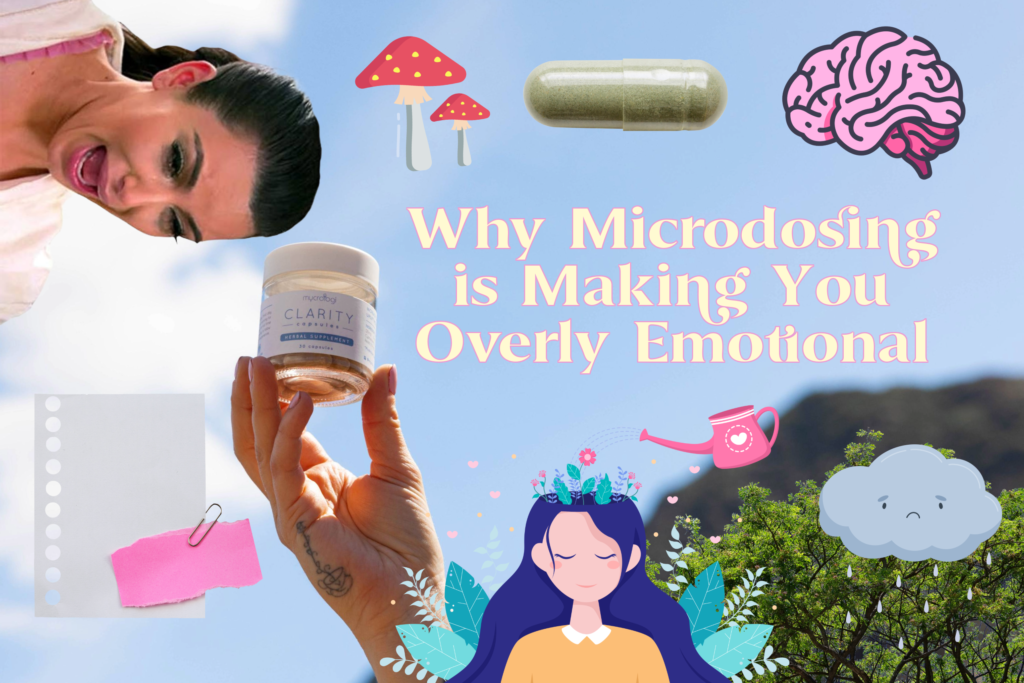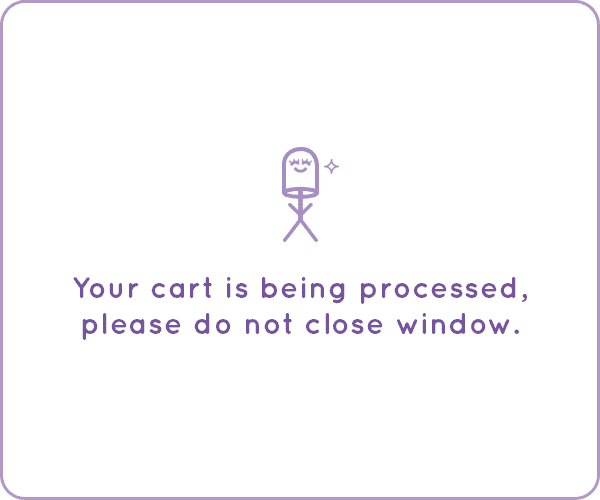Uncategorized
Why Microdosing is Making You Overly Emotional
So, you were scouring the internet for a way to calm your anxieties, improve your mental health, and become a more level-headed, cognitively sound human being. Maybe your reasons were different, but one thing is consistent: 99% of people looking to start a microdosing practice are seeking some level of self-improvement—whatever that means to you.
But then you tried your first microdose and found yourself crying. Maybe you didn’t cry at all, but you felt a wave of sadness or deep-seated emotion rise to the surface, and trying to suppress it felt impossible. While this isn’t the most common outcome, it’s prevalent enough to have caught the attention of researchers and microdosing professionals.
The part that might surprise you? You’re not actually having a bad reaction to the medicine. What you’re experiencing is a psychedelic-induced process called “emotional excavation.” With the right determination, you can turn this not-so-pleasant experience into a fast-track path to healing and well-being—it just takes a little bit of work.
What is Emotional Excavation?
Emotional excavation, in simple terms, refers to the uncovering and amplification of repressed emotions, often beyond your control.
The experience of sadness and emotional excavation while microdosing can be explained by the interplay between the brain’s neurochemistry and the psychological effects of psychedelics. Often, the sadness people feel isn’t new; it’s something that has been there all along but hasn’t been fully addressed. While waves of sadness are never a pleasant feeling, the subconscious burying of these emotions over extended periods can cause damage to the brain and body that is difficult to reverse. Think of microdosing as swallowing a glow-stick that illuminates whatever your mind knows you need to work on, and it’s up to you to navigate it.
It’s a catch-22, really. You want to microdose to feel happier, but in turn, you’re forced to feel sadder—yet by embracing the lows, happiness is ultimately prompted. This brings us to the icing on this emotional cake: how do you navigate this reaction properly?
Before diving into that, it’s helpful to understand the science behind this visceral reaction… you know, to make it make sense.
Why Microdosing is Making You Emotional: The Science
Psilocybin mushrooms are considered “non-specific mental amplifiers,” meaning they do not create a specific emotional or mental state on their own. Instead, they enhance or intensify the current state of mind, amplifying whatever thoughts, emotions, or psychological patterns are already present.
In addition to this characteristic, mushrooms also affect a prominent section of the brain—the amygdala. While psilocybin’s effect on the amygdala is the root of many of its mental health benefits, the amygdala itself is a key brain structure involved in the processing of emotions, particularly fear and anxiety. The alterations induced by psilocybin can therefore have varying results from person to person. Specifically, psilocybin reduces amygdala activity, which, for some, can facilitate deep emotional processing, allowing individuals to confront and work through difficult emotions (such as sadness, anger, or fear) in a more direct way.
Accompanying psilocybin’s effect on amygdala function is its ability to modulate Default Mode Network (DMN) activity. This effect can work wonders for our mental health by reducing ruminating thoughts; however, it may also lead to the surfacing of—yes, you guessed it—difficult emotions. This can include sadness, as the brain becomes more open to processing unresolved emotional content.
Does this mean your heightened emotional state while microdosing is a result of amygdala or DMN modulation? Likely, but not necessarily.
Microdosing psilocybin, a non-specific mental amplifier, as stated above, is a complex practice that offers no concrete certainty about the experience you will have. What we do know is that clinical trials actually utilize this heightened emotional state to their advantage, essentially using the emotional outpouring as a tool for healing that is proving itself to be effective in the long term.
A clinical trial conducted by Johns Hopkins University on psilocybin-assisted therapy for patients with depression and anxiety—specifically end-of-life distress in patients with life-threatening cancer—found that psilocybin facilitated intense emotional experiences, including waves of sadness and grief throughout the experience. These emotional states were not regarded as side effects; rather, they were integral to the therapeutic process.
Follow-up assessments showed that the therapeutic effects of the experience, including relief from depression and anxiety, were sustained over time. Many participants attributed these positive changes to the emotional processing and catharsis they experienced during the psilocybin sessions, which provided lasting psychological benefits in the long run.
The difference between a study like this and independent mushroom practices? The patients involved in this study experienced amplified emotions in controlled settings, guided by professionals and psychotherapists. When we take a microdose in an uncontrolled environment, it becomes more of a rigorous process to navigate these emotions.
But it’s not impossible.
Navigating Heavy Emotions While Microdosing
When it comes to psychedelics (and many other things in life), mindset is everything. For example, if you take a microdose and feel a wave of melancholy rush over you, instead of sinking into the discomfort and letting it absorb you until the effect has subsided, ask yourself: Why am I feeling this way, and what can I learn from this experience?
Write it Down
All that talk of journaling in the microdosing community isn’t just wishy-washy business; in fact, it’s a proven tool for staying grounded and aware throughout these psychedelic journeys. Taking a moment to jot down exactly what you’re feeling, and writing solely for yourself without judgment, can help mitigate the sensation of overwhelm while dealing with your emotions.
Walk Outside
Another effective grounding method is the combination of nature and movement. Time in nature has been shown to dampen the stress response and induce feelings of peace and calm. Movement of the body can also help loosen the rigidity of that “stuck state” we often feel when sad. If you begin to feel overwhelmed by your heightened emotional state, consider a walk in nature to help reposition and/or find peace within your mindset.
Seek Out Guidance
Lastly, if microdosing in an independent, uncontrolled setting is not providing you with the experience you’re seeking, understand that resources are available to help guide you through these mental states. Microdose coaches are becoming more and more accessible to the general public and can provide expertise in areas such as psychiatry and holistic medicine, offering users the education and integration needed to benefit from a microdosing practice in a sustainable and effective manner.
We are proud to offer a trusted resource through Mycrologi, a Bioneuroemotion & Microdosing Coach, Gisel Romero. You can book a one-on-one consultation with Gisel through our resource page on our website.
Conclusion
While heightened emotional states during microdosing can be used as an opportunity to facilitate healing and personal growth, it’s important to recognize that microdosing in an uncontrolled setting may not always be appropriate for certain mental states. Situations such as grieving or navigating significant life transitions may require a more cautious approach, as the addition of new brain alterations might exacerbate feelings of overwhelm rather than complement them. In these cases, seeking professional guidance or choosing to microdose in a more structured environment can make a significant difference in ensuring that the experience remains a positive and healing one.



